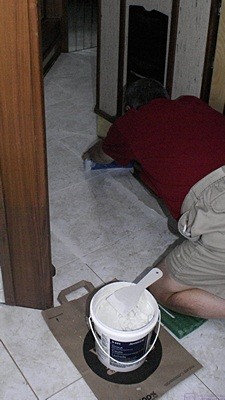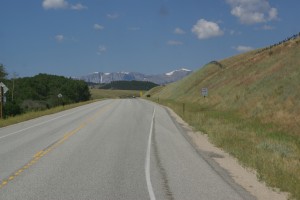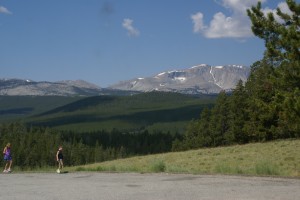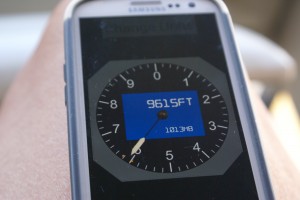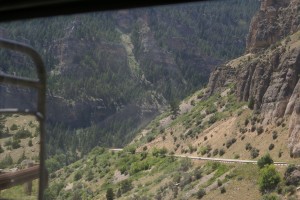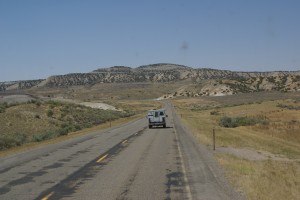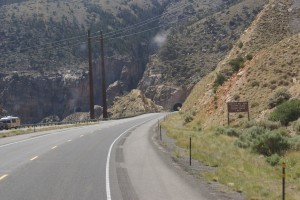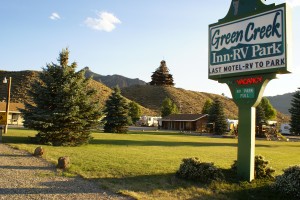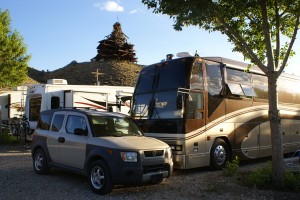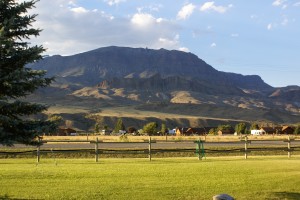I was awakened at 6:30 AM by heavy rain. I was not sleeping comfortably and had to get up anyway, so I put on my lightweight robe and slippers and took my iPad to the living room. Naturally the cats wanted to be fed so I took care of that and then settled in to put the finishing touches on yesterday’s blog post. The rain lasted for about 20 minutes. I e-mailed the post to myself at 7:15. Linda got up at 7:30 AM so I made coffee but we deferred breakfast until later.
I was thinking about the house battery voltage issues Butch was having and the role of the Vanner battery equalizer in his (and our) house battery system. I did another Google search on “battery equalizer …”, and selected “batter equalizer circuit” from the list. One of the listings was for the original patent application by James D. Sullivan as assigned to Vanner, Inc. ( http://www.google.com/patents/US4479083 ). (I found it interesting that Google has a special directory for patents.) As I expected, it is a DC-to-DC converter and in its most common configuration it is designed to take charge from the upper portion of a series battery pack and supply it to the lower part of such a pack or to any loads connected across just the lower bank.
One of its features is that it looks at the voltage across the entire battery pack and uses a voltage divider network (two resistors in series) to generate a reference voltage that is compared to the voltage across the lower bank. Differences as small as 0.01 volts result in the transfer of charge from the upper to the lower bank when the lower bank has the lower voltage. As implemented for use with buses and other vehicles that have 24/12 dual voltage DC electrical systems the divider network consists of two equal resistors and the reference voltage is 1/2 the overall battery pack voltage. The design can “balance” other configurations, in which the “upper” and “lower” banks do not have the same voltage, by changing the divider resistors to have the correct ratio. I will call Butch again this evening to report what I found and see how things stand with them in general.
When we had consumed a sufficient amount of coffee to be alert enough to work intelligently and safely we went to the garage to finish assembling the left plenum/support box for the built-in sofa. I forced mating pieces into alignment while Linda drove in the screws. These parts dry fit perfectly so this should not have been a problem. I blame the slight misalignment on the corner clamps that I used. I was reminded, once again, that cheap tools are almost never a bargain.
We had breakfast at 8:30 AM; homemade granola with leftover mixed berries. We also spilt a banana that was getting past ripe. As we were finishing our meal I got a call from Steven Weber at Martin Spring with another question on the Webasto system in the Prevost Bus Conversion he is servicing. He had isolated a cracked fuel pipe and needed to order a replacement. I suggested Sure Marine Service but also mentioned Lloyd DeGerald and Darin Hathaway.
Linda needed to spend some time at her desk preparing for a 1 PM meeting with the I.T. department at the University of Michigan Ann Arbor so I took a shower and got dressed to work. I gathered up the laundry, started a load, and then spent some time in the garage sanding pieces of the built-in sofa while Linda showered and got dressed for her meeting. She planned to leave at 11:45 AM. I left at 11:30 and went to Lowe’s to buy tack cloth.
Tack cloth is like sticky cheesecloth and is probably called that because it is “tacky” to the touch. It is used to remove sawdust, drywall dust, and other little tiny particles from surfaces such as sanded wood just prior to the application of finishes. While I was there I looked at inline water separators and inline oilers for use with air compressors supplying air to pneumatic tools. I also looked at copper fittings to see if they had 90 degree elbows that I could use to modify the Aqua-Hot coolant lines that feed the two front fan-coil hear-exchangers.
Linda left before I got home. I moved the laundry to the dryer and went back to the garage to work. I was contemplating what I wanted to do next when Keith pulled up in his truck and trailer. I chose to skip having the lawn mowed this week which will help Keith get the rest of his clients taken care of in his shortened 4-day workweek. The grass has grown since last Monday but not that much and is still short and brown in places. With rain in the forecast today, tomorrow, and Thursday giving it another week should be good for it. I showed him the floor in the bus before he left.
I returned to the bus project and realized that I needed to stain the underside of the built-in sofa shelf as part of it might be visible through the notch in the vertical front panel at the floor. As long as I was staining that I also stained the tops of the plenum/support boxes so they would blend with the two stationary pieces at either end of the seat.
With the staining done I came inside to make a few phone calls. The first one was to Josh Leach at Coach Supply Direct to check on the details of the Corian countertop for the custom desk. Josh said the Corian normally comes bonded to plywood which protects it from cracking in shipment. I want to go ahead and cut the 3/4″ plywood top that will join the two pedestals together. I also wanted to know if his Corian vendor could come out on the afternoon of the 14th to measure and possibly install the countertop by the end of the week. His vendor turns out to be an Amish craftsman who does not “come out and measure” or “come back and install.” Josh said he would check with the vendor to see if he would use my plywood base and also see if he had the Sandstone product in stock.
My next call was to Pat Lintner to check on dinner plans for the upcoming GLCC Surplus and Salvage rally. I need to coordinate with Crimp Supply to have them provide catalogs for the attendees and perhaps speak to the group before dinner. I got his answering machine and left a message.
My third call was to Jim Miteff (N8KUE) returning his call/message from earlier. We had a long chat about RVing and Prevost bus conversions. It’s a big topic and I sometimes forget that I have spent the last 10 years learning about it. When I think back to the beginning of this adventure, however, I recall how exciting yet overwhelming it was initially. I see Jim in the same place, but he is a very quick study and professional researcher so he will get past the overwhelming part fairly quickly.
While I was talking to Jim I heard a loud bang and then another one. They sounded like it had come from within the house. After the second one I got up to investigate. As I peeked out the front door a Consumer’s Energy truck was backing out of the driveway. I flagged the driver down and asked what was up. He said they had detected a leak and that he had just fixed it. I presumed it was at our meter but he wasn’t any more specific than that. I thought it was odd that he did not knock on the door first to let me know he was on site, but I guess they have the right to service their infrastructure. I have smelled gas on that side of the house occasionally ever since they installed it but dismissed it as a “purge valve” doing its thing. We had the same issue at the old house and they kept telling me it was a “vent” mechanism on the meter. I never belief that, but whatever.
I wrapped up my call with Jim, put in another load of laundry, and returned to the garage to apply polyurethane to as much of the built-in sofa pieces as I could. Each piece has to be done in two steps and requires two coats, so that’s four applications that will have to spread out over a couple of days.
There wasn’t much else I could do, and I did not feel like working at my desk, so I hung up the dry laundry and then worked on my iPad in the living room. Linda had made an appointment with Renee to have her hair cut at 4:30 PM. She stopped at Meijer’s on the way home and finally arrived at 5:45 PM. I went back to the garage at 6 PM and applied another coat of polyurethane.
Linda bought an Amy’s Roasted Vegetable pizza for dinner and made a nice salad to go with it. I had some more of the Leelanau Cellars Apricot wine and we had the last two vegan cupcakes for dessert. I tried calling Butch twice but his phone was either off or out of range. I called Pat Lintner again and this time he was home. Saturday dinner will be at a restaurant so that will not be a good time for Crimp Supply to talk to the rally attendees and pass out catalogs. I will call them tomorrow and see what I can arrange.
I headed back to the garage yet again, applied polyurethane to all the surfaces that had not yet been coated, put the brush in the soapy water, sealed up the can, and closed up the garage. I think I have just enough polyurethane left to put one more coat on the top surface of the shelf. I plan to do that in the morning before I start anything else.
On the drive home Linda heard a weather forecast that thunderstorms were headed our way this evening with up to 1″ of rain, strong wind, and possibly small hail. Linda headed off to bed at 8 PM to watch NCIS and I caught the last half of the show. I turned the channel to Create on Detroit PBS and watched A Chef’s Life, a series about a wife and husband who run the Chef & The Farmer restaurant in eastern North Carolina, and then turned the TV off.
I checked the weather with my iPad and it appeared that system had fallen apart although there was still a reduced chance of scattered thunderstorms at 11 PM and again from 2 to 4 AM. I turned the light out at 10:30 PM.
 Madeline was not fully awake, however, and sat with Linda on the living room sofa and read stories for a while.
Madeline was not fully awake, however, and sat with Linda on the living room sofa and read stories for a while.